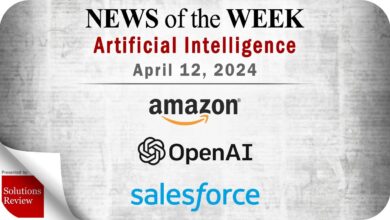Artificial intelligence is the new employee of the month

-
Organizations are increasingly adopting AI to address evolving economic, technological and workplace challenges, data shows
-
AI has taken a role in optimizing hybrid and remote work environments, aiding in cybersecurity and helping industries like finance and engineering
-
Gartner projects significant growth in AI chips revenue and the adoption of AI-enabled PCs
Artificial intelligence (AI) is becoming a star employee in workplaces everywhere.
A new study from Spiceworks shows organizations are increasingly adopting AI-powered solutions to keep up with evolving economics, technological advancements and disruptions in the workplace. It is becoming a “game-changer in rapidly evolving global workplaces,” Spiceworks said.
For example, finance and enterprise resource planning (ERP) teams are leveraging AI and cloud-hosting solutions to tackle inefficiencies and high operational costs. Meanwhile, engineering and manufacturing companies are addressing hiring challenges by investing in automation and AI.
According to data from Aberdeen Strategy and Research, 52% of business leaders have gained greater confidence in AI’s potential, viewing it as a transformative tool. Additionally, 35% of companies plan to hire AI-related talent in the near future.
Mike Lock, Aberdeen’s Managing Director of Research, noted that companies investing thoughtfully in AI report better customer loyalty, increased productivity and higher satisfaction levels — “unlike those that use AI solutions more sporadically.”
Companies that have invested in AI have reported 2.7x and 3.2x improvements in customer satisfaction and productivity, respectively.
AI is also playing a role as hybrid and remote work drive IT infrastructure spending toward cloud and edge technologies. That is to say, as organizations increasingly adopt hybrid cloud infrastructure, AI applications can help optimize those operations.
“With applications to bridge communication gaps, such as real-time translation and sentiment analysis, AI could help optimize such operations with a balanced operational strategy,” Spiceworks noted in the study.
The transition to remote and hybrid workplaces has expanded the attack surface for cyber threats, prompting organizations to invest heavily in cybersecurity technologies. According to Aberdeen, 61% of organizations have experienced system availability issues due to cyber incidents. Integrating AI into cybersecurity solutions enhances threat identification, response times and recovery.
And AI could be sitting on every worker’s desk pretty soon, if you ask analyst firm Gartner.
The firm recently projected that AI-enabled personal computers will comprise 22% of total PC shipments in 2024. By the end of 2026, it expects all enterprise PC purchases will be AI PCs.
These AI PCs, equipped with a neural processing unit (NPU), will operate longer, quieter and cooler, with continuous AI tasks running in the background, opening up new opportunities for integrating AI into daily activities.
Getting AI right
It’s clear that AI is poised to transform the modern workplace, but its success hinges on effective implementation and ease of access.
The data from Aberdeen indicated that 68% of businesses, especially smaller enterprises, struggle to attract talent to manage AI solutions, highlighting the need for skill development and strategic investments.
Gartner shared with Fierce that the journey toward optimizing everyday AI starts with a simple framework. The firm breaks down that roadmap into three categories: employee usage patterns, information and grounding sources, and the wiring.
Employee usage patterns include general-purpose large language models (LLMs), domain-specific chatbots, AI embedded in applications and low-code/no-code chatbot development tools.
Information and grounding sources are fundamental for enhancing the relevance and accuracy of AI applications. Public data sources include internet content, commercial products, government services and social media. Private data sources could be internal documents, management accounts and enterprise databases.
The wiring component includes design patterns, APIs, connectors, agents and orchestration engines, essential for optimizing data flow and supporting specific use cases. This category also involves middleware for consolidating multiple data sources and advanced computing for intelligent information retrieval.



